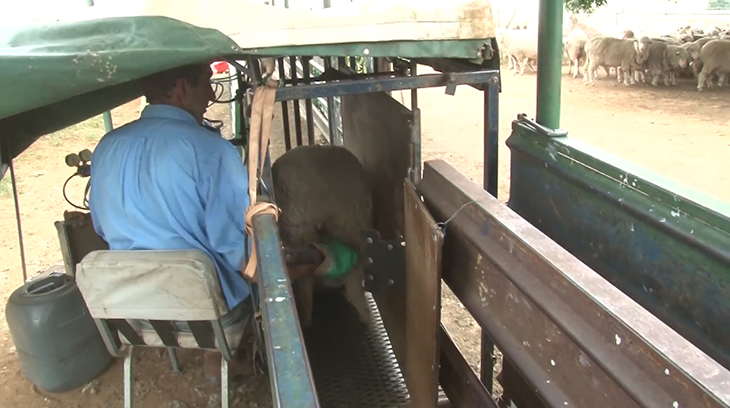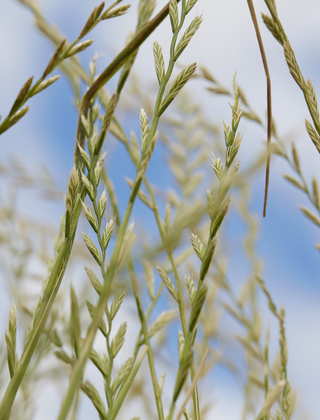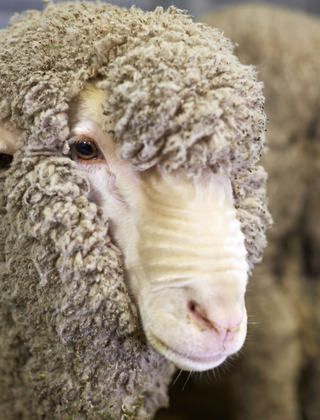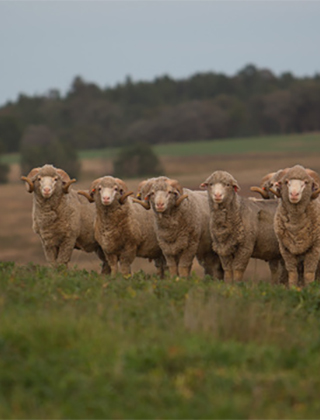Pregnancy scanning for improved productivity and welfare

A project jointly funded by AWI and MLA to increase the adoption of pregnancy scanning will help more producers to customise their management of multiple- bearing ewes, leading to an increase in lamb survival, faster lamb growth and reduced ewe mortality.
Increased lambing percentages through better use of pregnancy scanning technology will provide significant lifts in productivity as well as major welfare benefits. Pictured is Andrew Naylor (Belubula Scanning) scanning ewes at Woodstock, NSW.
A project jointly funded by AWI and MLA to increase the adoption of pregnancy scanning will help more producers to customise their management of multiple- bearing ewes, leading to an increase in lamb survival, faster lamb growth and reduced ewe mortality.
Sheep producers who don’t scan their ewes are missing out on a valuable opportunity to boost farm profitability through increases in lambing percentages.
Producers who scan their ewes for the number of lambs they carry can manage their multiple-bearing ewes differently to single- bearing ewes, feeding each group according to their respective nutritional requirements. Through this targeted nutrition and lambing management, producers can lift lamb survival and flock efficiency.
A 2½-year-long AWI and MLA project that began in July last year aims to increase the adoption of pregnancy scanning across the industry by 10%. This would increase the number of ewes scanned by two million ewes per year, up from 20 million ewes per year.
15% more of the scanned flocks providing customised management of twin/multiple- bearing ewes by 2032 would lead to a 5% increase in twin-lamb survival to weaning, up from the current 75% to 80%, plus faster lamb growth and reduced ewe mortality. The predicted extra twin lambs weaned from 2022-32 is 1,326,927, with 11,439 extra weaned in the year 2022, rising to an extra 285,976 in the year 2031.
This project is also aimed towards achieving the National Wool R&D strategy objective of by 2022 increasing from 25% to 34% the number of Merino ewes that are scanned for the number of lambs they carry and are differentially managed to aid reproductive performance.
STRONG CASE FOR SCANNING
Associate Professor Forbes Brien of the University of Adelaide’s School of Animal and Veterinary Sciences, who leads the project, estimates that about 40-50% of the Australian flock is being scanned, but that some producers may not scan every year.
“The relatively low level of adoption of scanning technology by producers is one of the key factors preventing good nutritional management of pregnant ewes. Only around half who are using scanning are looking at the number of lambs they carry in addition to whether ewes are pregnant or not,” Dr Brien said.
“The relatively low level of adoption of scanning technology by producers is one of the key factors preventing good nutritional management of pregnant ewes.”
Dr Forbes Brien, University of Adelaide
Dr Brien says there is a strong case for scanning for the number of lambs carried and subsequently managing twin-bearing and multiple-bearing ewes according to their nutritional requirements.
“Studies on twin-bearing Merino ewes have shown that if you can get the ewe to lambing with a condition score of 3.2 compared to 2.3, you increase your lambing percentage from 115% to 142%. The survival of twin-born lambs from birth to marking also increases when the ewes were in better condition, from 57% to 71%,” he said.
“In times of drought in particular, many people are having to contain their stock to almost full feeding. If you can accurately tailor your feeding to different nutritional requirements, you are going to be well ahead.”
Dr Brien says scanning can also be used to age the foetuses and organise flocks according to lambing dates, particularly if flock size is not an issue.
“There are advantages in knowing what is going to be born early or late, particularly when people are allocating limited resources,” he says. “If you can organise the flock within a two-week window, you can manage the lambs more appropriately for marking and weaning, streamline management and improve welfare outcomes.”
INCREASING ADOPTION OF SCANNING
The project objectives will be achieved by overcoming key barriers to adoption, including strengthening the business case for pregnancy scanning and addressing concerns about scanning accuracy, the economics of adopting the technology and the associated logistics of managing ewes separately according to the number of lambs they carry.
Extension materials (including workshops and webinars) for woolgrowers and consultants will be produced, tailored to different production environments, skill levels and resource availability (eg livestock identification systems and labour availability). Separate materials will be produced for pregnancy scanners.
Further opportunities to improve the usefulness and benefits of pregnancy scanning will also be investigated during the project, including identifying early indicators of foetal health, the feasibility of remote diagnosis of scanning imagery and the better linking of the technology with EID sheep tags and associated data capture.
A Benefit Cost Analysis (BCA) of the project for woolgrowers has predicted a high return of $13.49 for every dollar of industry and collaborating organisation in-kind investment, despite relatively conservative assumptions.
DR BRIEN’S TIPS AHEAD OF SCANNING
- Joining should ideally be five weeks (but no more than six weeks) long.
- Use teaser rams to get ewes cycling when the ram goes out.
- Stop supplementing one to two days before scanning. Take them off food and water the night before.
- Ensure enough help is available on the day to keep ewes moving.
- Have good yards and panels to allow for the subdivision of the scanned ewes.
- Make sure the animals are not wet or daggy. It makes scanning more difficult.
- Competent scanners are in demand. Book them early.
This article appeared in the March 2020 edition of AWI’s Beyond the Bale magazine. Reproduction of the article is encouraged, however prior permission must be obtained from the Editor.
















